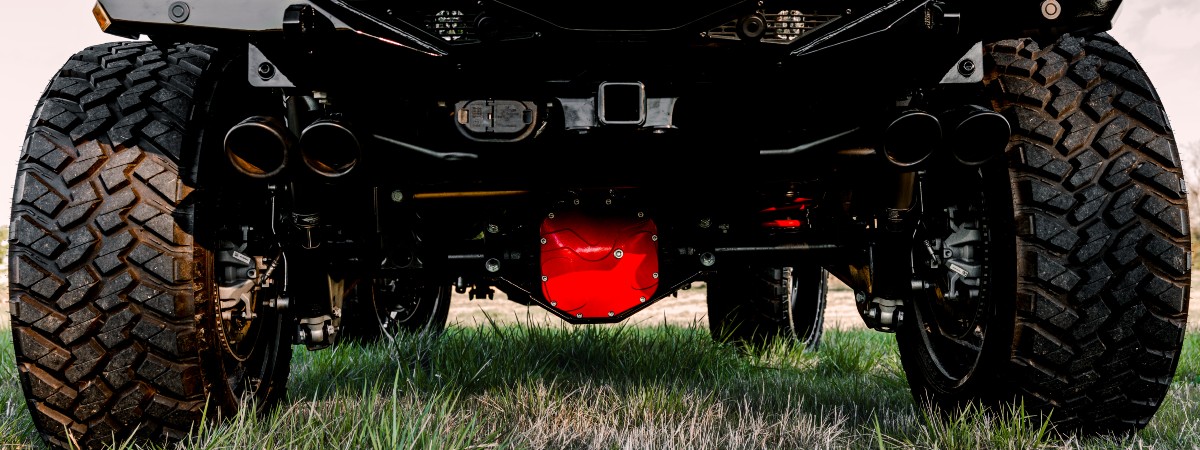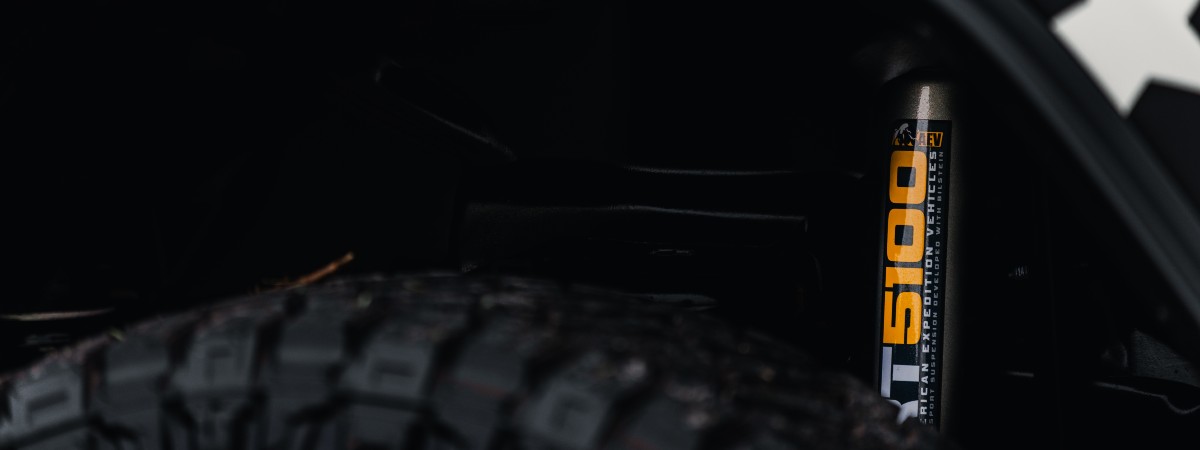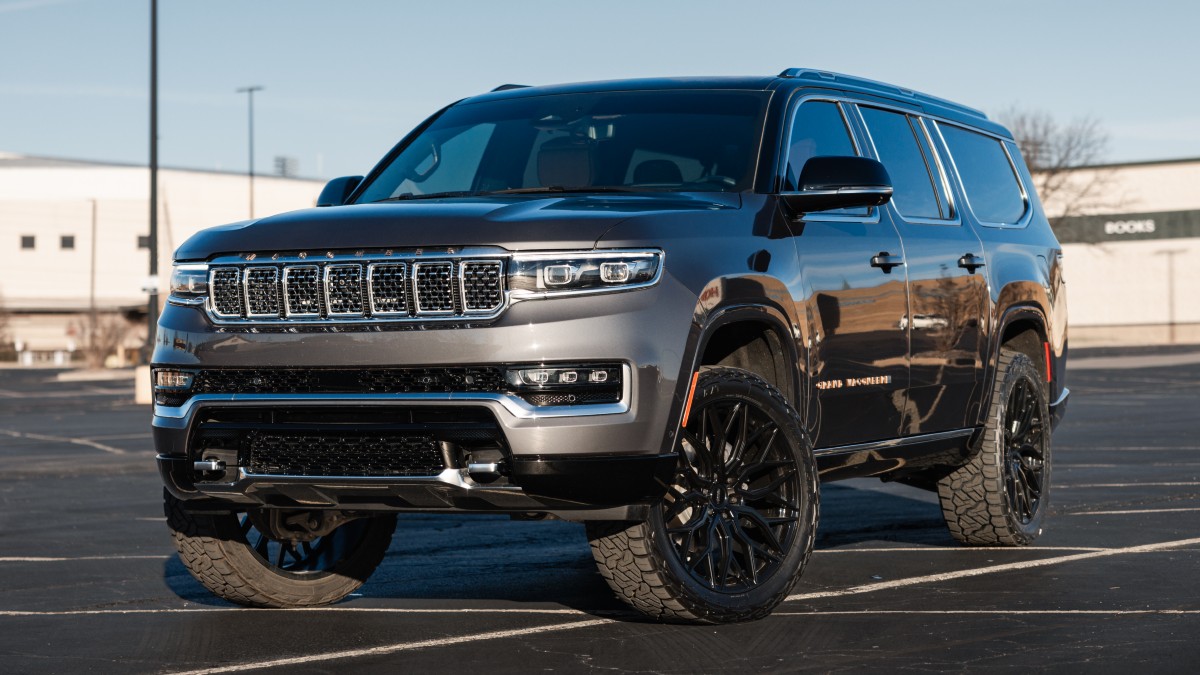Whether you’re looking to embark on a full custom-built dream vehicle, or simply want to enhance a Jeep to tackle off-road trails even better than normal, lifting your Jeep is always going to be one of the crucial and exciting upgrades you can make. Not only does it enhance the aesthetics of your rig by giving it an aggressive, trail-ready stance, but it also improves ground clearance and makes room for larger tires, unlocking new possibilities for your off-road adventures.
But even if you’re not looking to go crazy with dozens and dozens of upgrades, there are several other critical components of your vehicle that you need to address. Your lift kit is a great start, but once you’ve upgraded your suspension system you’ll also need to consider upgrading aspects of your vehicle like steering, brakes and even the drivetrain. Neglecting these parts of your Jeep could ultimately compromise both performance and safety, making them just as important as your suspension itself. Today we’re going to tell you exactly what you need to upgrade when you lift your Jeep!
Steering: Staying in Control
Upgrading your suspension system with a lift kit has other ramifications throughout your vehicle that you might not realize without the proper research. For example, lifting your Jeep will change the whole geometry of its steering system. Without addressing these indirect changes, other issues may begin to creep into your vehicle, such as bump steer, reduced responsiveness and increased wear of various components throughout the system.
This is caused by parts such as the drag link and track bar being altered when the vehicle is raised, which in turn applies additional strain to the steering assembly as a whole. By adding proper steering upgrades into the mix, you can ensure your Jeep remains safe and easy to handle despite changes in geometry. Not upgrading can leave you with a misaligned steering system, which can cause your vehicle to feel unstable and even lead to premature failure of critical components.
Potential Upgrades
Okay, so now you know you need to upgrade your steering system, but how? Here are a few examples of steering system upgrades that can help mitigate these issues.
- Adjustable Track Bars
- Adding one of these can help you to realign the axle after your lift, reducing a lot of that unnecessary stress on the suspension system.
- Steering Stabilizers
- Adding a quality stabilizer can drastically minimize the amount of wobbling and vibration you feel in the vehicle, especially when tackling rough terrain.
- Heavy-Duty Steering Linkage
- If you’re a true off-road enthusiast, upgrading to a stronger drag link and tire rods can ensure system durability and deliver more precise steering.

Brakes: Managing Extra Stress
Obviously, lifting your Jeep will make your vehicle stand at a whole new height. This, coupled with alterations to the vehicle’s weight distribution, can impact your braking system as well. Once your Jeep is lifted, you’re likely to experience increased stopping distances and reductions to braking efficiency thanks to the changes in vertical force as well as how the brakes are able to handle the added height. Furthermore, the changes in how weight shifts during braking will lead to more stress on the components of your braking system.
When you lift your Jeep, it also raises its center of gravity, which completely changes the handling of your vehicle as well as how it brakes — especially when driving on uneven terrain or making sudden stops. These altered dynamics can cause a lot of extra wear and tear on your stock brake components, ultimately reducing your ability to stop safely in these situations. Upgrading your brakes will not only accommodate the inherent changes that came with your lift kit, but will also ensure that your Jeep remains stable when the need to stop abruptly arises.
Potential Upgrades
Here are a few more upgrade examples, this time highlighting what might help your braking system:
- Performance Rotors and Pads
- These are literally designed to handle the increased stress caused by altered weight dynamics, thus improving the consistency of your brakes while also reducing heat buildup.
- Brake Calipers
- Upgrading your calipers can provide stronger clamping power, which helps to compensate for the changes in force distribution introduced by your lift kit.
- Hydraulic Lines
- Upgrading your hydraulic lines with reinforced or braided options can ensure smooth brake operation and even prevent expansion under heavy braking pressures.
Drivetrain: Delivering Optimal Power
The geometry of your drivetrain is another aspect of your Jeep fundamentally altered when you upgrade your suspension system with a lift kit. Many different pieces of the drivetrain – such as the driveshafts, axles and differentials – are designed to operate within very specific angles and tolerances, which are changed significantly upon being lifted. This leads to increased strain on many different drivetrain components, ultimately causing increased wear, reduced efficiency and perhaps even mechanical failure over time.
Your drivetrain is incredibly important to your vehicle, as it’s what’s responsible for transferring power from the engine to the wheels. Any misalignment within the drivetrain can compromise performance, so lifting your Jeep creates several stress points along the driveshaft and axles, causing binding and vibration in your vehicle. Furthermore, this change in angles can reduce how effective your differentials are, which makes it harder to maintain control during off-road maneuvers and challenging climbs
Potential Upgrades
Finally, here are some examples of upgrades you can make to your drivetrain to counteract the impact of your lift:
- Driveshafts
- You can opt for extended or heavy-duty driveshafts to accommodate the new geometry, which in turn prevents binding and ensures consistent operation.
- Axle Reinforcements
- Strengthening your axles can enable them to handle the increased stress from the lift as well as any additional strain that comes with off-road driving.
- Transfer Case Adjustments
- By installing a transfer case drop kit, you can correct the angles of the driveshaft and improve performance.
- Differential Recalibration
- By recalibrating your differentials, you can ensure their proper alignment and operation, which will help to maintain torque delivery and traction after your lift.
If you have any questions about introducing a lift kit to your Jeep vehicle or what else you should do afterwards, don’t hesitate to reach out to us here at LiftedJeeps.com. We’d be happy to answer any questions you may have!



